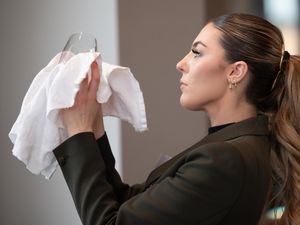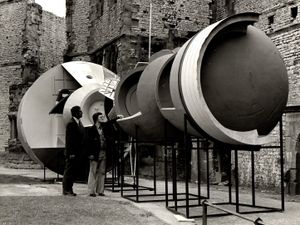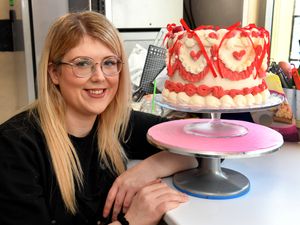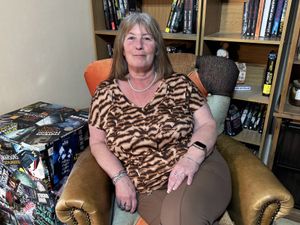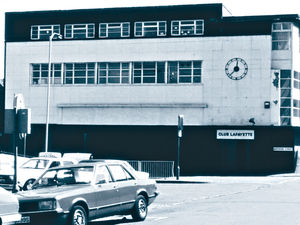Keeping the craft of wood engraving alive
The art of wood engraving requires a steady hand, an eye for detail, and plenty of patience.
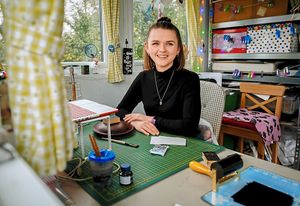
Ellie Cliftlands uses this centuries-old printmaking technique to create intriguing and intricate pieces of work.
Taking inspiration from photographs, she engraves her detailed design into a block of wood and uses her 1867 Albion press to print the image onto paper.
The 27-year-old, from Whixall, first started learning the craft three years ago and was mentored by master engraver, John Lawrence.
“I found woodcut printmaking during the final year of my illustration degree course at Duncan of Jordanstone College of Art and Design in Dundee. One of the constructive criticisms I received was that I was trying to put in too much detail so I thought I would try a different process where I could put in all that detail and that was wood engraving. No one is teaching it at art schools any more so I had just jump in and give it a go,” she explains.
Since then Ellie, who is one of only a handful of young engravers in the UK, has continued to hone her skills.
“When I first started I was awarded a grant from the Society of Wood Engravers to buy some tools and wood blocks.
“As I mentioned I wasn’t taught but I’d sent a couple of prints for feedback to Simon Brett, who was the chairman of the society at the time and he was incredibly encouraging and I was also extremely lucky to have had a couple of mentoring sessions by one of the ex-tutors of the Cambridge School of Art, John Lawrence, who is a prolific children’s book illustrator and wood engraver,” says Ellie, who sells her work through her Etsy shop.
For her engraving she uses small chisel-like tools to make different types of marks in the wood that together create her chosen image.
“It’s got to be a close grained wood like box wood or I tend to use lemon wood. I enjoy the process and the feel of the wood. It makes you slow down and take your time,” says Ellie.
But before she can start chipping away at the wood, she needs to choose her design. A lot of her inspiration comes from nature and one of her favourite places to gather ideas is Attingham Park, near Shrewsbury.
“I tend to walk around National Trust sites and RHS gardens taking endless photos. I can take hundreds of photos but only one will be good enough. It needs to have the right amount of detail and the right tones.
“I think what I like the most at Attingham is the walled gardens because I find it very interesting and I like how it’s always changing. I take a lot of photos there. I made a print of the rhubarb forcers and I was pleased with how it came out,” explains Ellie.
Once she has chosen a scene, Ellie will use the photo to create a sketch on carbon paper which has been placed on top of her wood so the pattern is transferred.
“Before I draw on any image, especially a view or something that people might recognise, the image has to be drawn reversed or it will be printed backwards. Words can be tricky if you don’t remember to reverse them,” she explains.
After finishing the sketch, the block is covered with a light layer of Indian ink so that lines of the drawing can still be seen.
Next Ellie will pick up her fine engraving tools, which have names such as the spitsticker and scorper and are used to create different types of mark on the surface.
As she cuts away the areas that she doesn’t want to print, the natural colour of the wood appears. It means when a print is made, the cuts made into the wood come out as white and the remaining top surface, which gets inked, as black. “It’s like drawing with light,” says Ellie, who held her first solo exhibition at Theatre Severn in 2019.
After applying ink to the block, she uses her press to make a print of the block. “I use extra smooth paper because I want to get as much detail as I can. Then one pull on the press and I should come away with an image.
“My favourite wood engraving, it would probably be my most recent piece Wollerton Old Hall, as it incorporates all that I’ve picked up so far.
I’ve been increasing my knowledge of how to create tone – I’m still very much learning about this – different ways of forming foliage and it includes some brickwork, which I learned how to do from my early engraving of the Attingham Forcers,” Ellie tells Weekend.
One of the reasons she is fascinated by wood engraving is that there is so much to learn and so many different possibilities.
“I’m going to be learning the rest of my life. Each time I complete a piece I think I’m getting better but I know there is still so much I can learn,” says Ellie.
“A couple of my favourite engravers are Harry Brockway and Eric Ravilious as they are both so far from how I engrave. Harry Brockway has such a strong command of the marks he makes. You always can tell it’s him by his swirling dashes and lines. He is also a stone carver and this translates into his sculptural and very recognisable engraving language.
“Eric Ravilious was the first engraver that I ever really knew about and took real notice of. His style is very of his time, art deco, but is still so appealing now with the often playful, whimsical topics and very bold graphic almost haunted style. The opposite of me with endless bushes and foliage. These two show me what else is out there and what else is possible with wood engraving,” she tells Weekend.
See www.elliecliftlands.co.uk

